I made some brioche bread the other day, and it is without a doubt the fluffiest and most delicious brioche ever 🙂
- Flour – 128 g
- Dry yeast – 1 sachet of 7 g
- Lukewarm milk – 220 g
- Eggs (of room temperature) – 6 (plus 1 more for egg wash of the loafs)
- Flour – 384 g
- Sugar – 105 g
- Salt – 2 tsp
- Butter (softened) – 227 g (plus some more for greasing the baking trays)

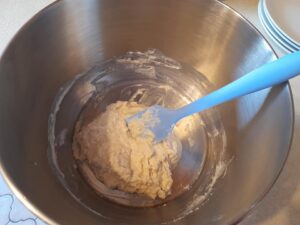
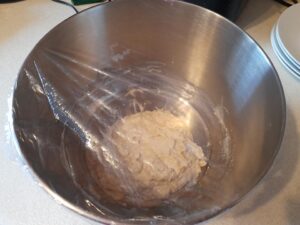
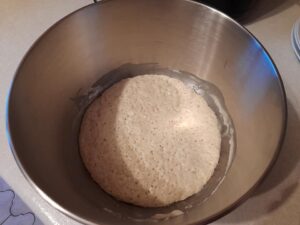


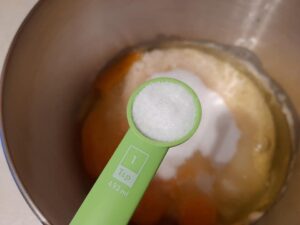
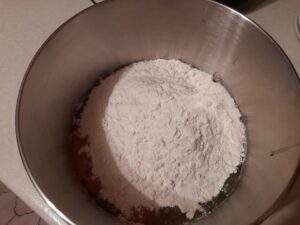
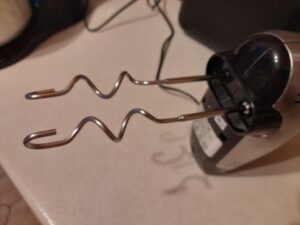
Since my bowl does not rotate, I rotate it by hand to ensure it’s all mixed evenly.
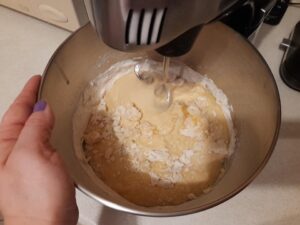
I use a scraper to scrape the dough of the sides of the bowl. As you can see, the dough is still quite liquidy…
Change the speed of your mixer to high and keep kneading for another 15 minutes or so. You can see the dough starts firming up – slowly…
Just keep at it until it curls up around the hooks like this. Look – it’s alive! 🙂
Your kneading time depends on how powerful your mixer is. When the dough is firmed up enough to curl up around the hooks like in a previous video, it’s time to start adding the butter. Your butter should be soft. Start adding it gradually – around 1 tablespoon or so at a time. Add another chunk just when the previous one fully incorporates.
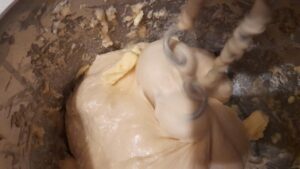
I know it’s tricky – the butter keeps wanting to escape from the hooks and pull away from the dough. I actively use the scraper to push the butter inside. Of course, I am very careful with my hands close to those hooks, – and so should you.
Once all the butter is incorporated, the dough is even firmer and elastic. It pulls away from the sides of the bowl more easily.
Keep kneading until it pulls away from the sides into a ball, and does not stick to the sides or your hands. Try pulling it a little.
Continue kneading for another few minutes, then stop to give it a “windowpane test”. The “windowpane test” is when the dough can be pulled quite thin before it starts tearing. It might not be very clear in this video, but when I tried pulling it with both hands, it pulled quite nicely without tearing.
Time to get your dough out and let it rest 🙂 Grease a bigger bowl, place your dough into it, cover with some cling film and leave for about 1 hour in a warm, dry and draftless place.
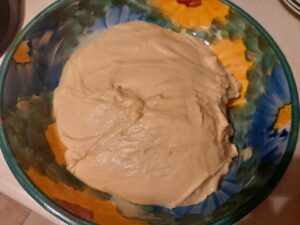
And 1 hour later – voila! See how the dough has grown 🙂
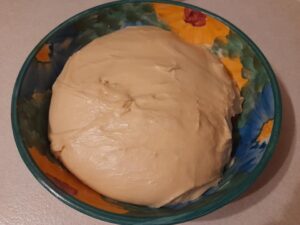
Prepare 2 loaf baking trays. Grease them well with butter. If you want, you may also put some baking parchment paper in, and grease it as well.
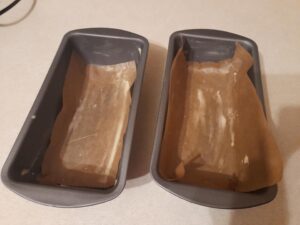
Prepare your working surface. I use a large wooden board and dust it, as well as my hands, with some flour.
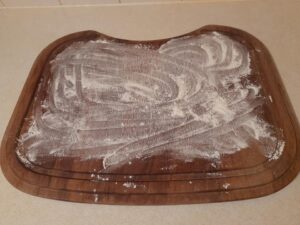
Now, divide the dough into 2 equal parts.
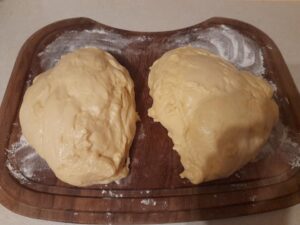
Put one part away into the bowl, and cut another one into 6 equal pieces.

Now, form each piece into a rectangular shape (quite a long one).
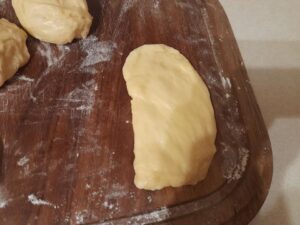
Do a “letter fold”. First of all, fold the top half down towards the middle…
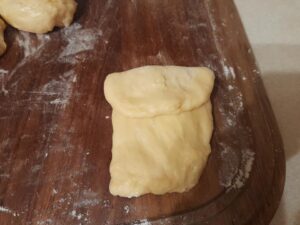
… and fold the bottom half up and over the top edge.
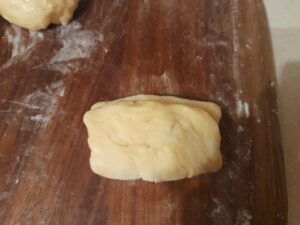
Now, turn it 90 degrees…
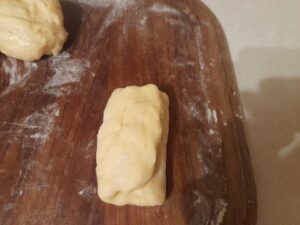
…flatten it with your hand…

…and roll it in from top to the bottom. Try to roll it as tightly as you can. Do the same with all 6 pieces, and then repeat the process with the second half of the dough.
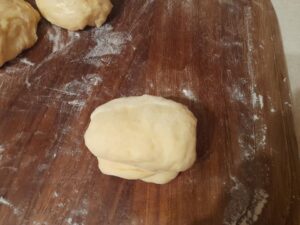
Now, place the “rolls” into the loaf trays. It’s fun to decide which roll goes where 🙂 Some of them would be bigger and some smaller. I place the bigger ones on the outside ends of the trays, as the outside ones get baked a lot faster and do not grow as high as the inside ones. So, bigger ones go on the outside, smaller ones in the middle 🙂 Push them in tightly next to each other, and leave to rest in a warm place for about 45 minutes to 1 hour. (Another great trick is to heat up your oven to about 50 C, switch it off and place the trays inside it).

And in an hour, your loaves have “rested” – and look how they’ve risen 🙂

Now, brush them thoroughly with an egg (or just egg yolk). Also, pre-heat your oven to 190 C, and bake for 25 to 30 minutes.
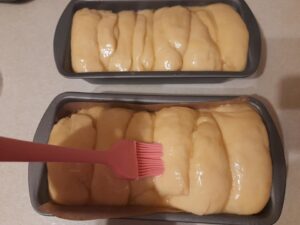
And they are out of the oven! (Your can’t smell them from this picture – they smell heavenly!)

Do not worry about the crust being quite dark golden brown, – the brioche should be like that. It doesn’t mean it’s overbaked. See that inside dough – it’s VERY soft, and if baked for any less time, it wouldn’t be well baked. Also, the crust should not be soft. Give it a tap – it should sound hollow.
And you can start tearing it, and – well, eating it (but don’t get carried away and eat it all at once! 🙂 See how it perfectly tears up? Brioche is not supposed to be cut with a knife – it’s designed for tearing and sharing 🙂 Those “rolls” are now glued together, but when you pull at them, they would tear off easily. Enjoy! 🙂

